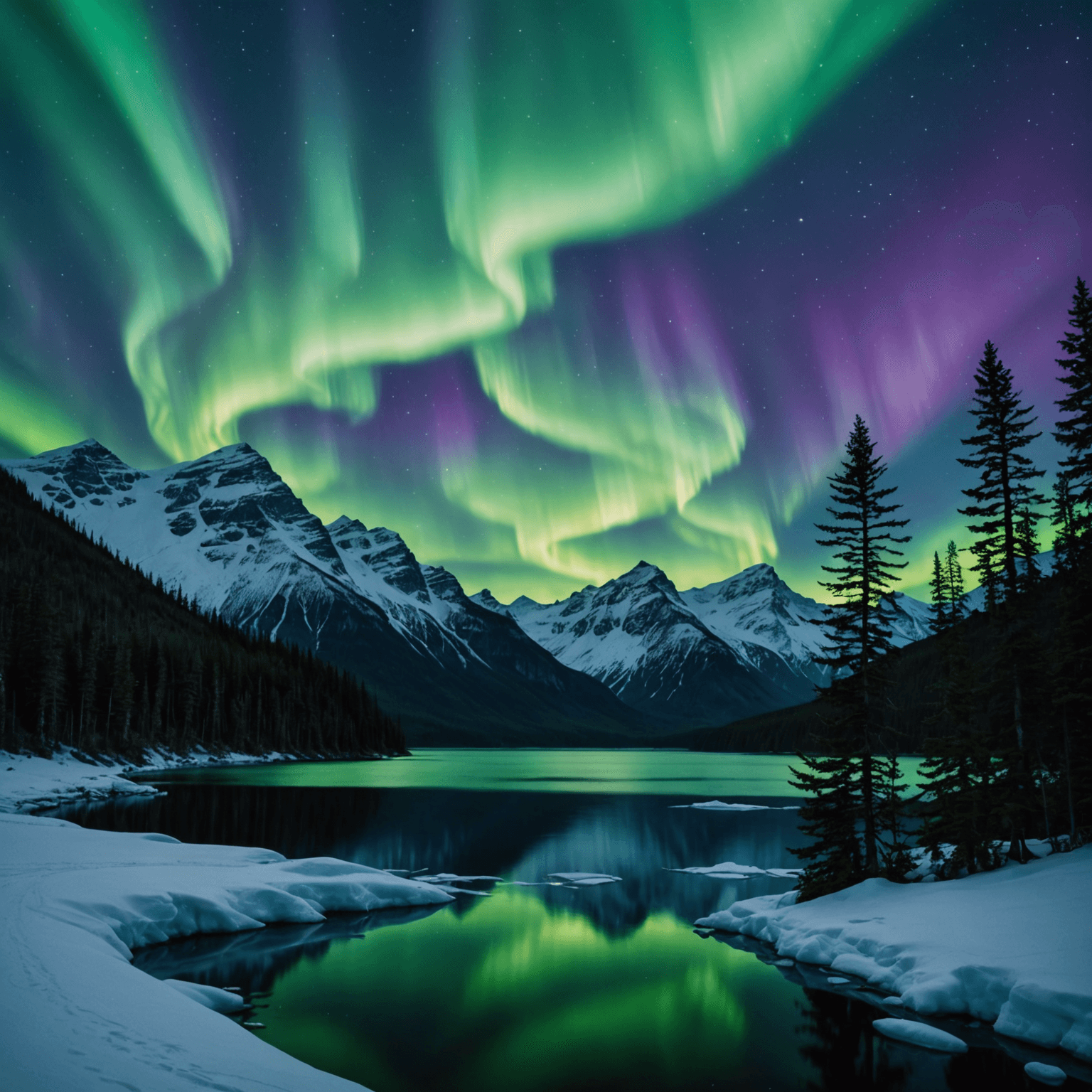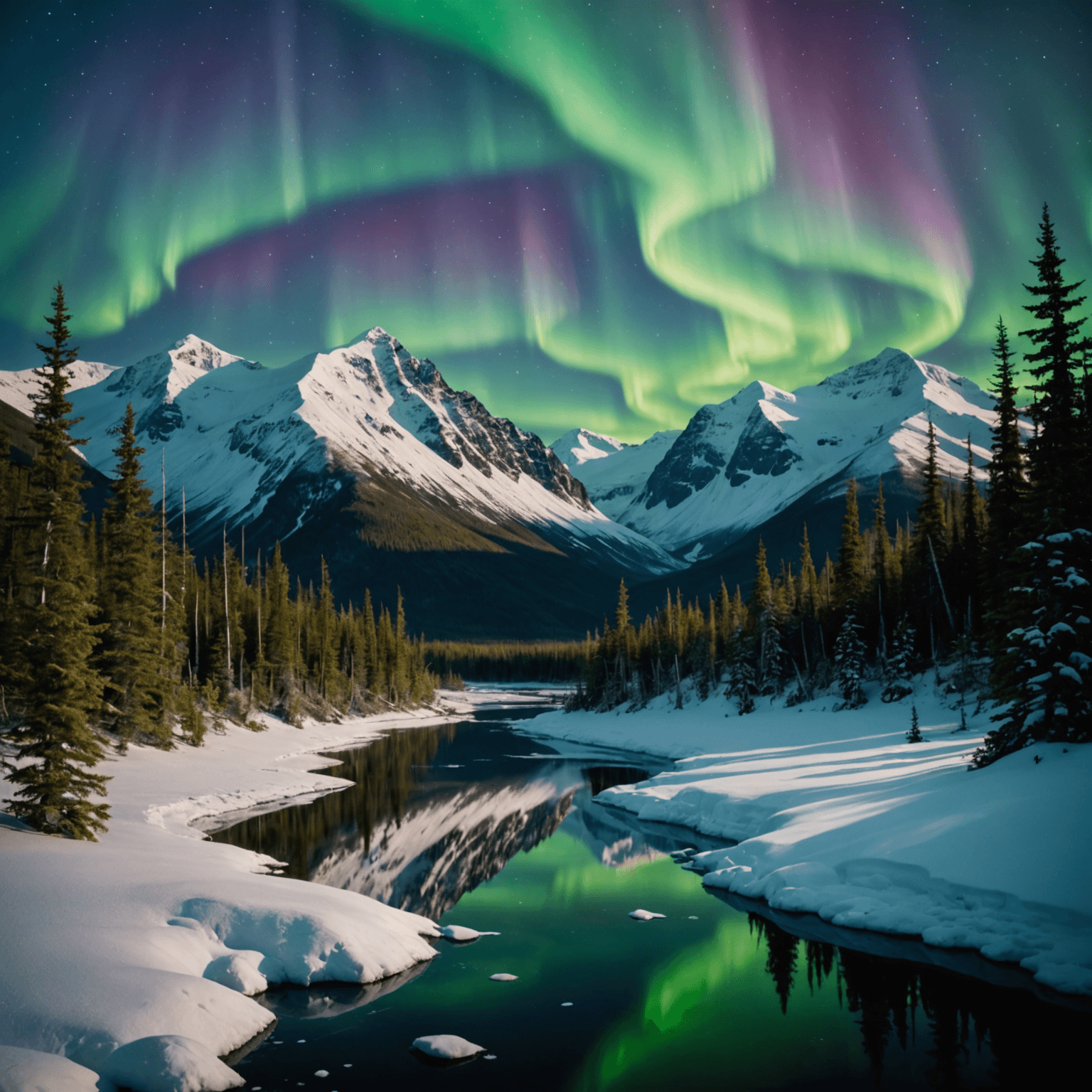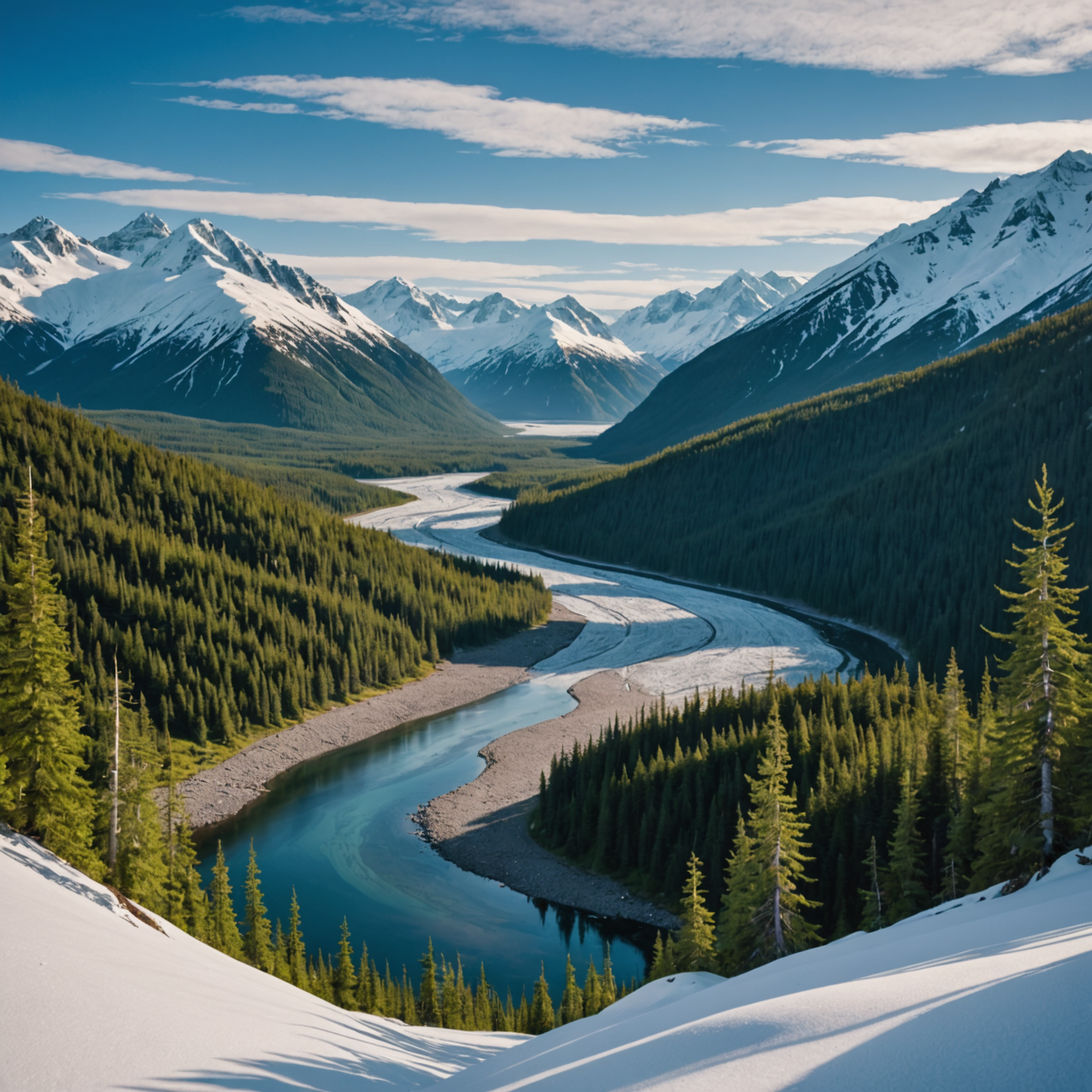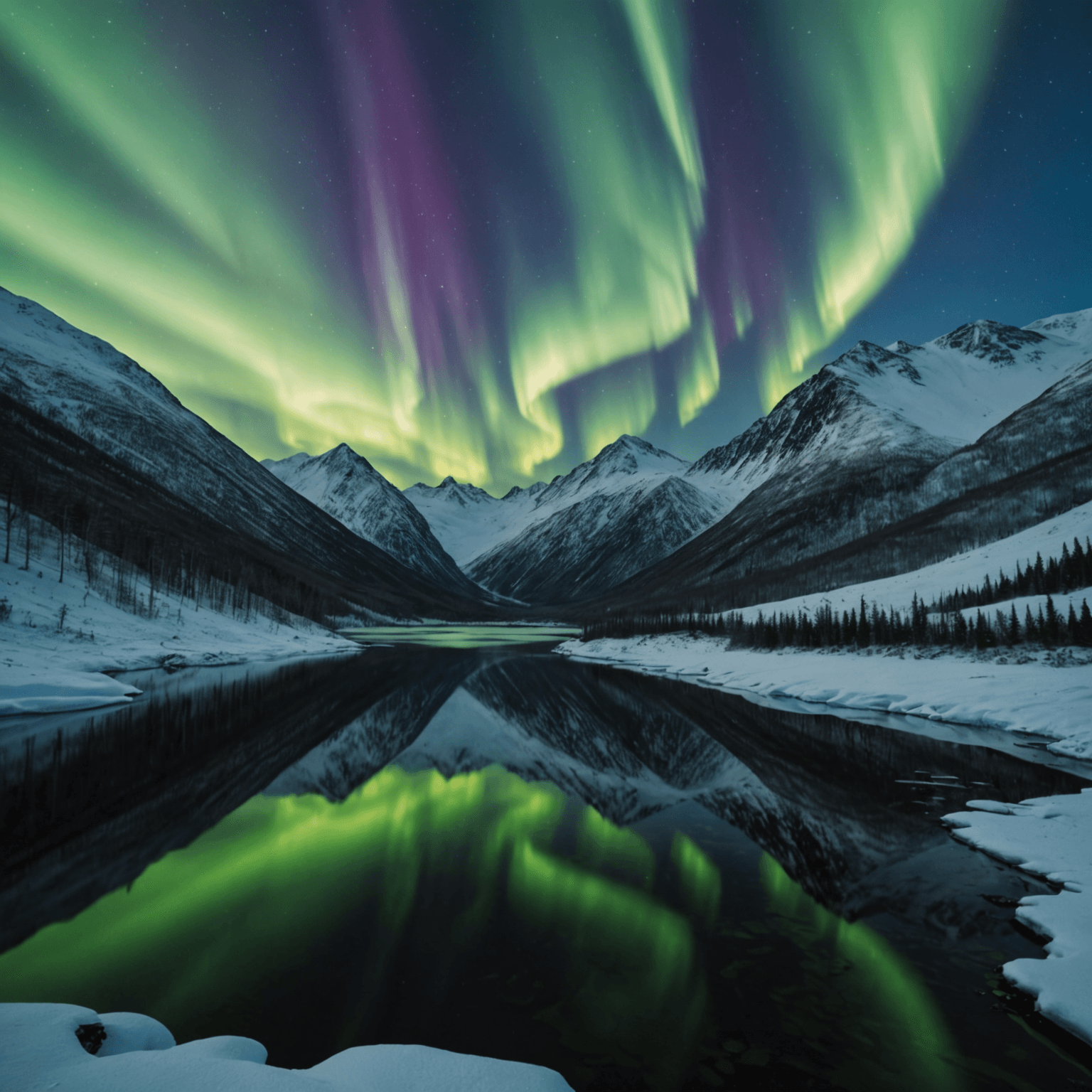Introduction
The Northern Lights, or Aurora Borealis, is one of nature’s most breathtaking phenomena. This celestial ballet of green, pink, and violet hues dancing across the night sky is a must-see for any avid traveler. But where is the best country to see Northern Lights? While several countries offer stunning views, Alaska stands out as a premier destination for experiencing this natural wonder. In this blog post, we will explore why Alaska is the best country to see Northern Lights, the optimal times and places to view them, and other exciting activities you can enjoy while on your aurora-hunting adventure.
Why Alaska is the Best Country to See Northern Lights
Geographic Location
Alaska’s location within the auroral oval, an area surrounding the magnetic poles where auroras are most frequently observed, makes it ideal for Northern Lights viewing. The state’s northern latitudes experience long, dark nights during the winter months, providing ample opportunities to witness the auroras.
Optimal Viewing Conditions
In Alaska, the best time to see the Northern Lights is from late September to early April when the nights are longest and the skies are darkest. The Alaskan winter offers clear skies, which are crucial for aurora viewing. The absence of light pollution in many areas also enhances visibility. For current aurora forecasts, websites like the Geophysical Institute’s Aurora Forecast can provide valuable information on the best times to head out.
Scenic Backdrops
Alaska offers some of the most stunning natural backdrops for viewing the Northern Lights. From the snow-capped peaks of the Alaska Range to the reflective surfaces of frozen lakes, the setting adds an extra layer of magic to the aurora experience.

Local Expertise and Tours
Alaska has a wide range of tour operators that specialize in Northern Lights experiences. These tours often include knowledgeable guides who can provide insights into the science behind the auroras and ensure a memorable experience. Consider exploring options like the Northern Lights Ultimate Adventure offered by local experts.
Best Places in Alaska to See Northern Lights
Fairbanks
Fairbanks is often regarded as the best place in Alaska to see the Northern Lights due to its location under the auroral oval. The city’s long, dark winters and relatively low light pollution make it an ideal spot for aurora viewing. Additionally, Fairbanks offers a variety of winter tours that can be combined with Northern Lights excursions.
Denali National Park
Denali National Park is not just a summer destination; it also offers incredible winter scenery and opportunities to see the Northern Lights. The park’s remote location and vast wilderness provide a perfect setting for an aurora adventure. For more information on visiting Denali, check out the Denali National Park website.
Anchorage
Though a larger city, Anchorage still provides opportunities to witness the Northern Lights, especially from its outskirts. The city serves as a great starting point for exploring other parts of Alaska. For tips on aurora viewing near Anchorage, visit Visit Anchorage.
Exciting Activities to Complement Your Aurora Adventure
Dog Sledding
A quintessential Alaskan experience, dog sledding offers a thrilling way to explore the snowy landscapes. Consider booking a dog sled ride to add an extra layer of adventure to your trip.
Snowmobiling
For those seeking an adrenaline rush, snowmobiling across Alaska’s rugged terrain is an unforgettable experience. Check out Alaska Snowmobile Tours for a variety of options.
Helicopter Tours
To gain a new perspective, helicopter tours provide a bird’s-eye view of Alaska’s stunning landscapes. Some tours even offer a combination of helicopter rides and dog sledding.

Conclusion
Alaska is undeniably the best country to see Northern Lights, offering unparalleled opportunities for witnessing this natural wonder. Its geographic location, optimal viewing conditions, and diverse array of activities make it a top destination for aurora hunters. Whether you’re exploring the wilderness by dog sled, snowmobile, or simply gazing up at the sky, the experience of seeing the Northern Lights in Alaska is truly unforgettable. For a comprehensive guide to planning your Alaskan adventure, visit Travel Alaska.
FAQ
What is the best time of year to see the Northern Lights in Alaska?
The best time to see the Northern Lights in Alaska is from late September to early April. During these months, the nights are longest and darkest, providing optimal viewing conditions.
Can I see the Northern Lights in Anchorage?
Yes, it is possible to see the Northern Lights in and around Anchorage, especially if you head to areas with less light pollution.
What should I wear for Northern Lights viewing in Alaska?
Dress warmly in layers, including thermal underwear, a heavy coat, gloves, a hat, and insulated boots. Winter temperatures in Alaska can be extremely cold, especially at night.
Are there guided tours for seeing the Northern Lights in Alaska?
Yes, there are many guided tours available that focus on Northern Lights viewing. These tours often include transportation, expert guides, and sometimes additional activities like dog sledding or snowmobiling.
How can I check the aurora forecast for Alaska?
You can check the aurora forecast for Alaska on websites like the Geophysical Institute’s Aurora Forecast or the NOAA Space Weather Prediction Center.
What are some other activities to do in Alaska during the Northern Lights season?
In addition to Northern Lights viewing, you can enjoy activities such as dog sledding, snowmobiling, and helicopter tours. For more ideas, visit Snowhook Adventures.
Is it safe to drive in Alaska during the Northern Lights season?
Driving in Alaska during the winter can be challenging due to snow and ice. It’s important to check road conditions and weather forecasts through resources like 511 Alaska before heading out.
Can the Northern Lights be seen every night in Alaska?
While the Northern Lights are frequently visible in Alaska, they are not guaranteed every night. Viewing depends on solar activity and weather conditions, so it’s best to stay informed through aurora forecasts and local weather updates.


